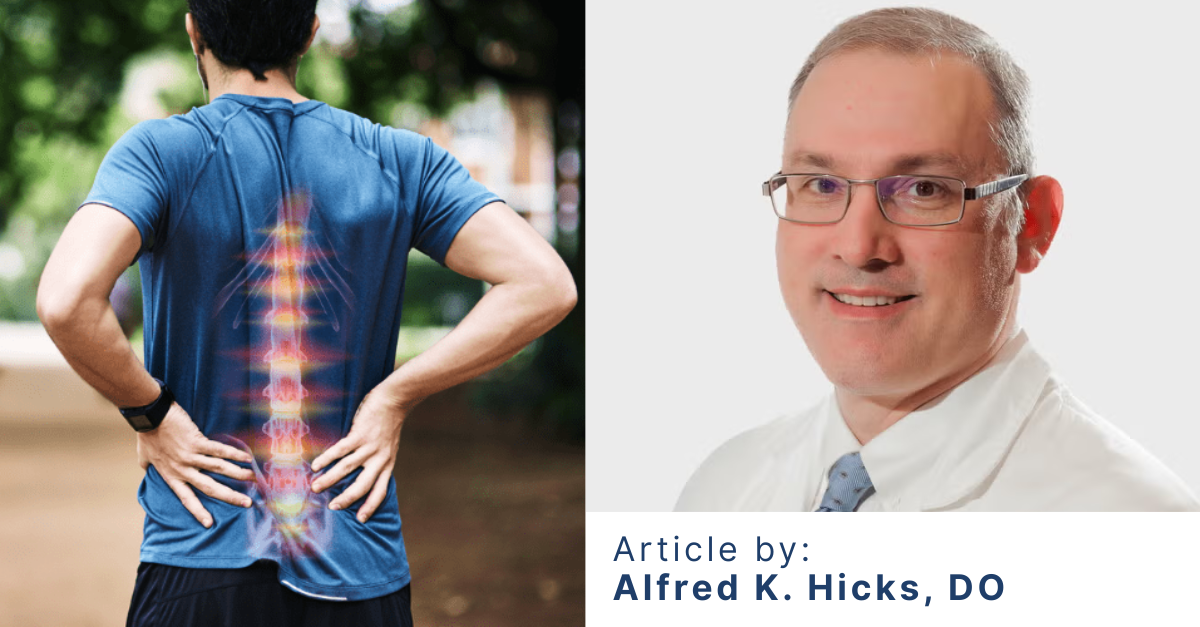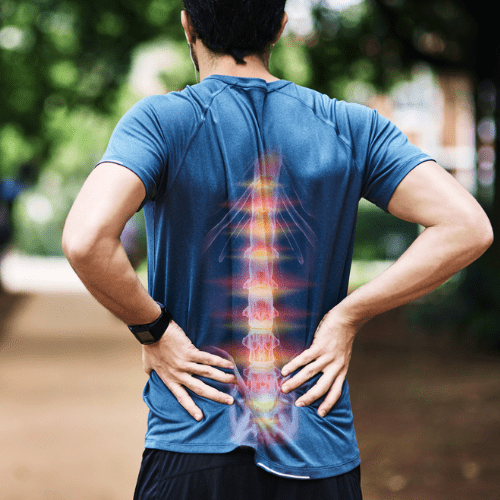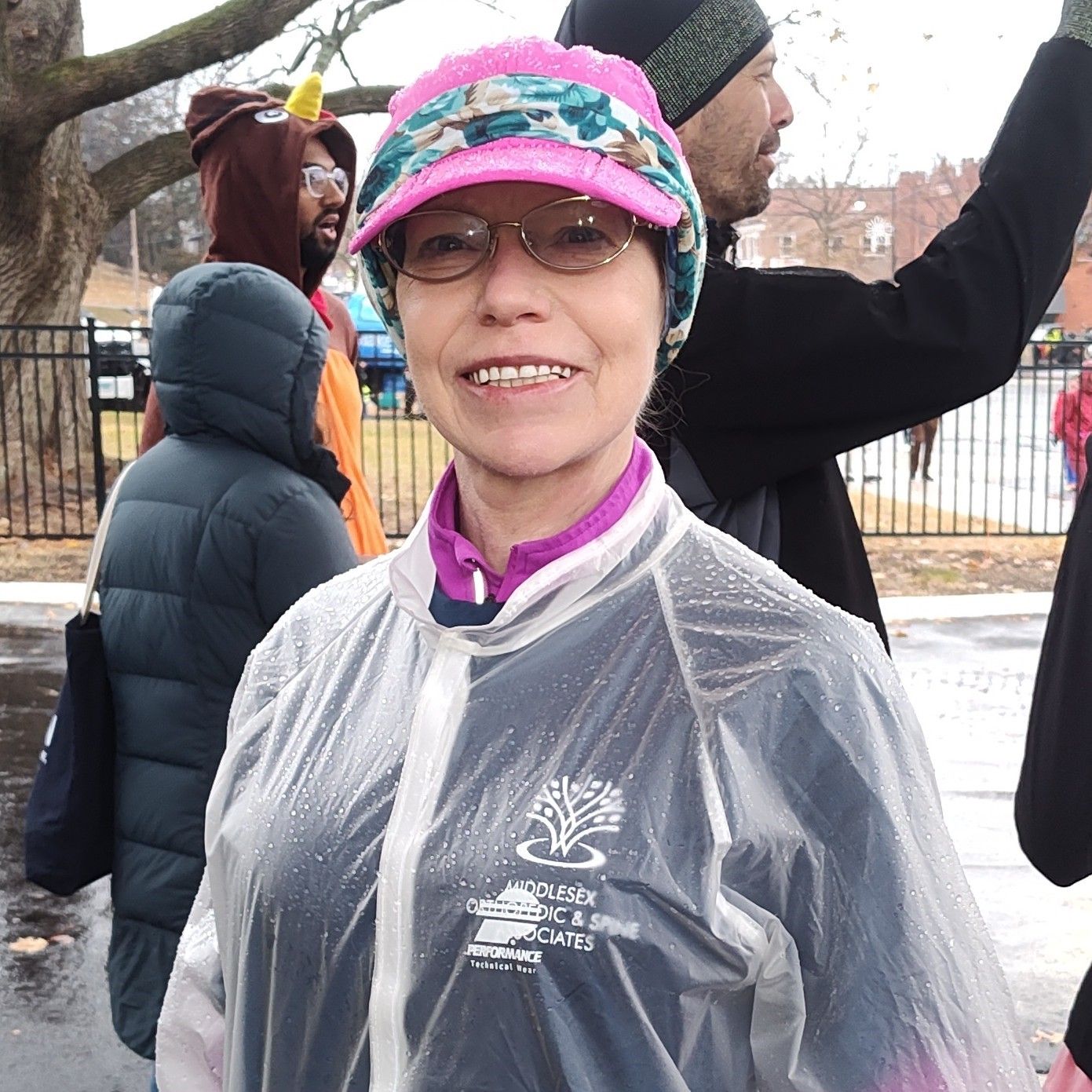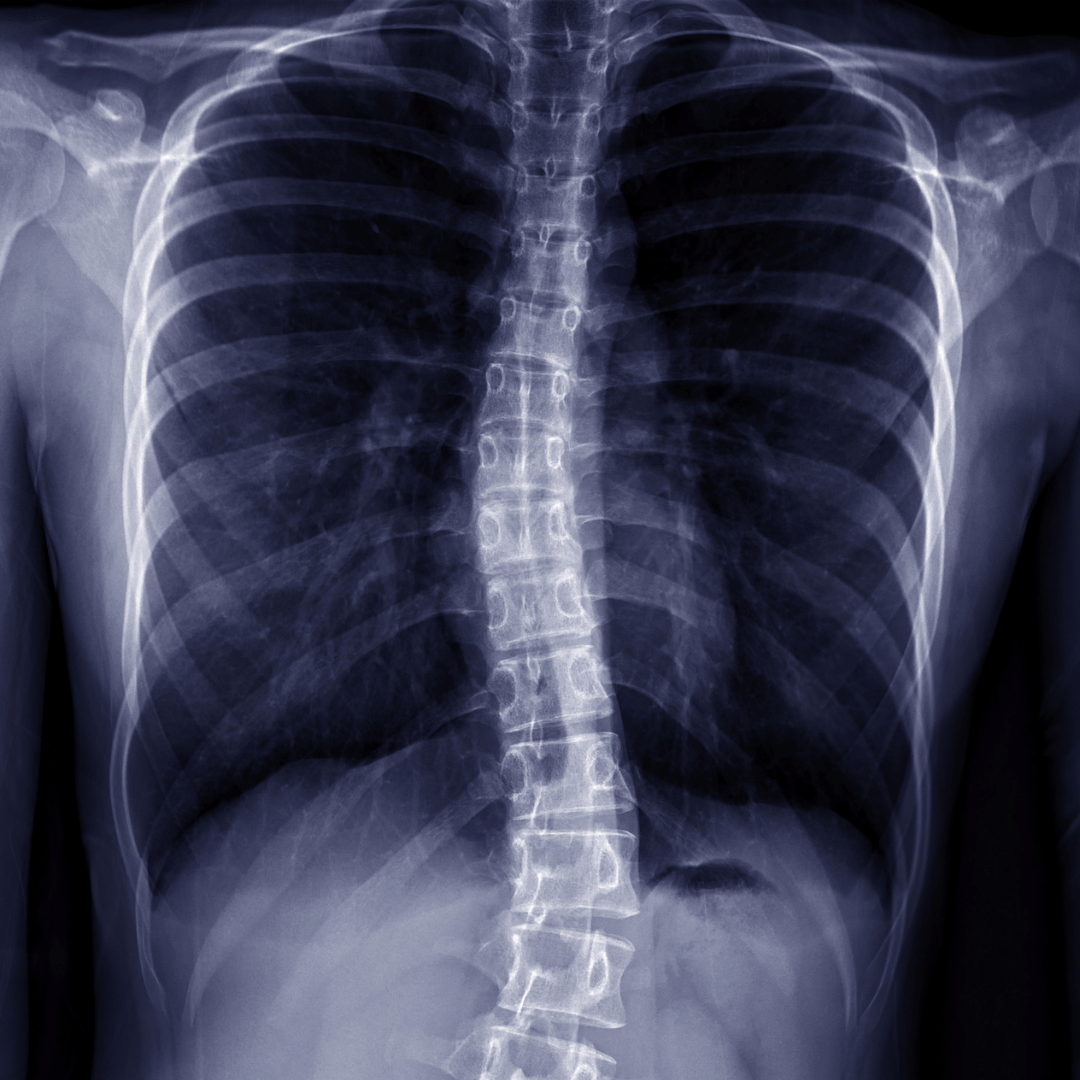
Featured Doctor
Alfred K. Hicks, DO
Get to know Dr. Alfred Hicks, an orthopedic spine surgeon at Middlesex Orthopedic & Spine Associates.
View Profile

Spondylolisthesis
What is spondylolisthesis?
This happens when one vertebra slips forward over the one below it, usually in the lumbar spine.
What are the symptoms?
People usually experience a mixture of lower back pain, leg pain known as sciatica, and possibly numbness, tingling, and weakness.
How is it treated?
Spondylolisthesis can usually be treated with physical therapy, core strengthening, and bracing. Sometimes epidural cortisone injections can be helpful. The typical surgical treatment is a spinal fusion, but sometimes a decompression alone is possible.
Sciatica
What is sciatica?
Sciatica is nerve pain radiating along the sciatic nerve. It usually happens when there is pressure on one of the nerve roots in your back.
What are the symptoms?
People often experience sharp or burning pain in their back and down their leg, along with numbness, tingling, or weakness. It can worsen when sitting or coughing, or when standing for a long period.
How is it treated?
Conservative options include medications, physical therapy, rest, ice, heat, physical therapy and chiropractic treatment. Some people benefit from epidural steroid injections. The surgical treatment can be a minimally invasive lumbar discectomy, where we remove the part of the disc that is pressing on the nerve root, with limited tissue disruption and a quick recovery.
Degenerative Disc Disease (DDD)
What is degenerative disc disease?
Degenerative disc disease is the natural wear-and-tear of spinal disc causing pain, inflammation and stiffness.
What are the symptoms?
People can experience chronic back or neck pain which may worsen when sitting, bending or lifting.
How is it treated?
Most people improve with activity modification, physical therapy, chiropractic treatment, and medications. Some patients see improvement with epidural cortisone injections. Decompression, disc replacement, or fusion are surgical options if the pain doesn’t improve.
Bulging Disc
What is a bulging disc?
A bulging disc is when the outer disc layer protrudes outward. It might press on a nerve.
What are the symptoms?
People can experience back or neck pain with radiating nerve pain.
How is it treated?
Bulging discs can be treated conservatively with physical therapy, medications and activity modification.
Pinched Nerve (Radiculopathy)
What is a pinched nerve?
A pinched nerve is a compression or irritation of a nerve root, often from a herniated disc, bone spur or narrowing of the spine (stenosis).
What are the symptoms?
People often experience radiating pain in their arms or legs, numbness or tingling, and/or muscle weakness.
How is it treated?
Anti-inflammatory medication, physical therapy and injections are conservative treatment methods. An anterior cervical discectomy (ACD) can be performed for a pinched nerve in the neck – it removes the disc and decompresses the nerve and is usually followed by fusion or cervical disc replacement. A minimally invasive lumbar discectomy is preferred for a pinched nerve in the lower back due to disc herniation.
Herniated Disc
What is a herniated disc?
What is a herniated disc?
A herniated disc is when the inner gel of a spinal disc leaks out and presses on nearby nerves.
What are the symptoms?
People can experience sudden back or neck pain, radiating nerve pain in the arms or legs (sciatica), and numbness, tingling, or weakness.
How is it treated?
Herniated discs can also be treated non-surgically with rest, physical therapy, chiropractic treatment, and medications. Some people need epidural cortisone injections. Surgical options could be a minimally invasive discectomy (lumbar or cervical), disc replacement or fusion surgery.





